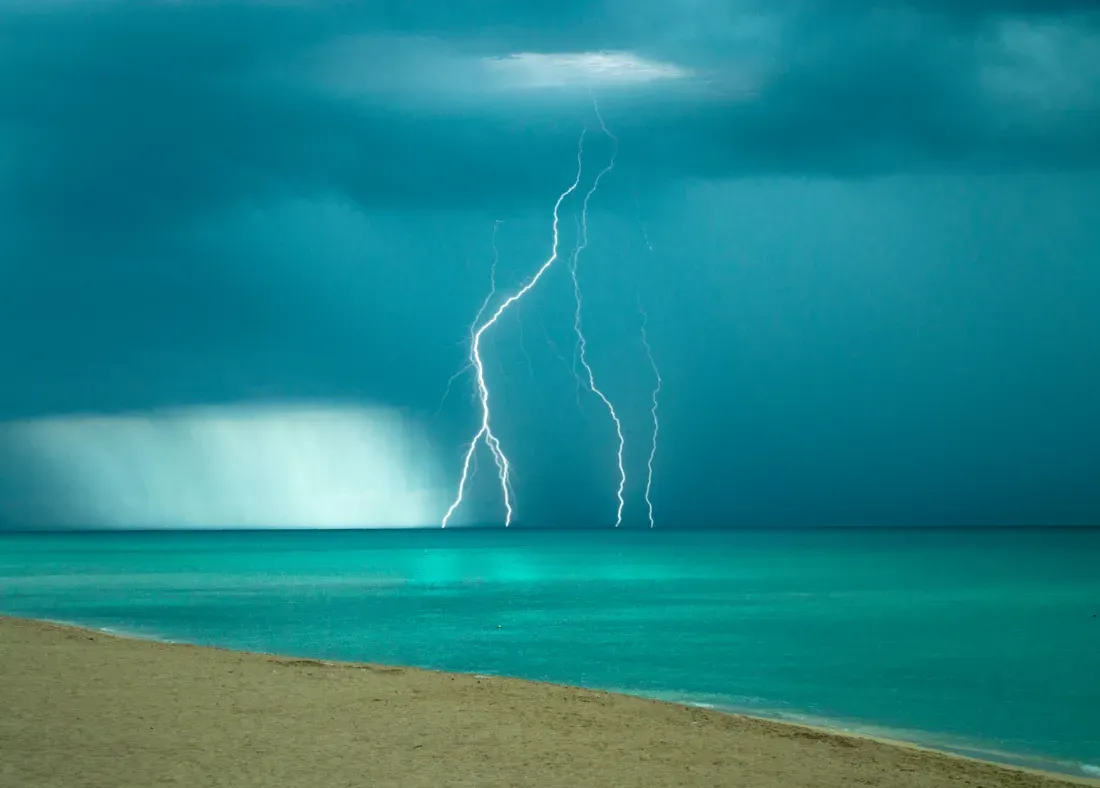It Is National Lightning Safety Awareness Week
News Staff • June 24, 2024
Lightning strikes occur often in summer months in the south

There are an estimated 23 million cloud-to-ground lightning flashes each year in the United States. During summer months the Alabama coast experiences rapidly formed thunderstorms. Warm temperatures allow the atmosphere to hold more humidity, and that humidity is a prerequisite for building clouds - creating conditions which may produce lightning.
During Lightning Safety Awareness Week, the Baldwin County Emergency Management Agency encourage you to learn more about lightning and lightning safety.
An estimated 1,000 people get struck by lightning each year in the U.S. Lightning strikes cause several deaths and people who are struck by lightning often suffer from neurological issues.
Lightning Safety Awareness Week helps to alert people that the outdoors are not safe during a thunderstorm. Lightning can strike from over 15 miles away and any delays in taking precautions can cause serious injury or fatality.
5 STRIKING FACTS ABOUT LIGHTNING
1. A lightning strike travels at the speed of 270,000 miles/hour.
2. When lightning strikes a beach, it fuses the grains of sand to create a small glass-like tube called fulgurite.
3. Lake Maracaibo in Venezuela is struck by the most lightning in the world.
4. Helicopters can cause isolated lightning strikes when they are flying close enough to a location that is positively charged.
5. There are approximately 1,400,000,000 lightning strikes per year across the globe.
Lightning Myths and Facts from the National Weather Service
Myth: If you're caught outside during a thunderstorm, you should crouch down to reduce your risk of being struck.
Fact: Crouching doesn't make you any safer outdoors. Run to a substantial building or hard topped vehicle. If you are too far to run to one of these options, you have no other good alternative. You are NOT safe anywhere outdoors.
Myth: Lightning never strikes the same place twice.
Fact: Lightning often strikes the same place repeatedly, especially if it's a tall, pointy, isolated object. The Empire State Building is hit an average of 23 times a year
Myth: If it’s not raining or there aren’t clouds overhead, you’re safe from lightning.
Fact: Lightning often strikes more than three miles from the center of the thunderstorm, far outside the rain or thunderstorm cloud. “Bolts from the blue” can strike 10-15 miles from the thunderstorm.
Myth: A lightning victim is electrified. If you touch them, you’ll be electrocuted.
Fact: The human body does not store electricity. It is perfectly safe to touch a lightning victim to give them first aid. This is the most chilling of lightning Myths. Imagine if someone died because people were afraid to give CPR! When tending to a lightning victim, be aware of the continued threat for lightning, and move yourself and the victim to a safe location as soon as it is possible.
Myth: If outside in a thunderstorm, you should seek shelter under a tree to stay dry.
Fact: Being underneath a tree is the second leading cause of lightning casualties. Better to get wet than fried!
Myth: If you are in a house, you are 100% safe from lightning.
Fact: A house is a safe place to be during a thunderstorm as long as you avoid anything that conducts electricity. This means staying off corded phones, electrical appliances, wires, TV cables, computers, plumbing, metal doors and windows. Windows are hazardous for two reasons: wind generated during a thunderstorm can blow objects into the window, breaking it and causing glass to shatter and second, in older homes, in rare instances, lightning can come in cracks in the sides of windows.
Myth: If thunderstorms threaten while you are outside playing a game, it is okay to finish it before seeking shelter.
Fact: Many lightning casualties occur because people do not seek shelter soon enough. No game is worth death or life-long injuries. Seek proper shelter immediately if you hear thunder. Adults are responsible for the safety of children.
Myth: Structures with metal, or metal on the body (jewelry, cell phones,Mp3 players, watches, etc), attract lightning.
Fact: Height, pointy shape, and isolation are the dominant factors controlling where a lightning bolt will strike. The presence of metal makes absolutely no difference on where lightning strikes. Natural objects that are tall and isolated, but are made of little to no metal, like trees and mountains get struck by lightning many times a year. When lightning threatens, take proper protective action immediately by seeking a safe shelter and don’t waste time removing metal. While metal does not attract lightning, it does conduct it so stay away from metal fences, railing, bleachers, etc.
Myth: If trapped outside and lightning is about to strike, I should lie flat on the ground.
Fact: Lying flat increases your chance of being affected by potentially deadly ground current. If you are caught outside in a thunderstorm, you keep moving toward a safe shelter.
Recent Posts


























